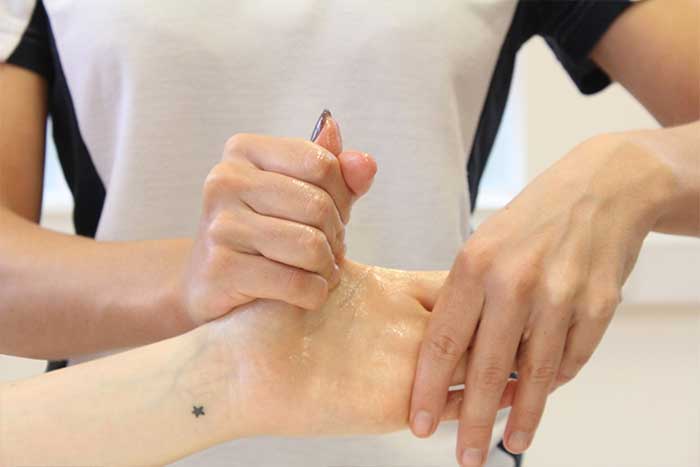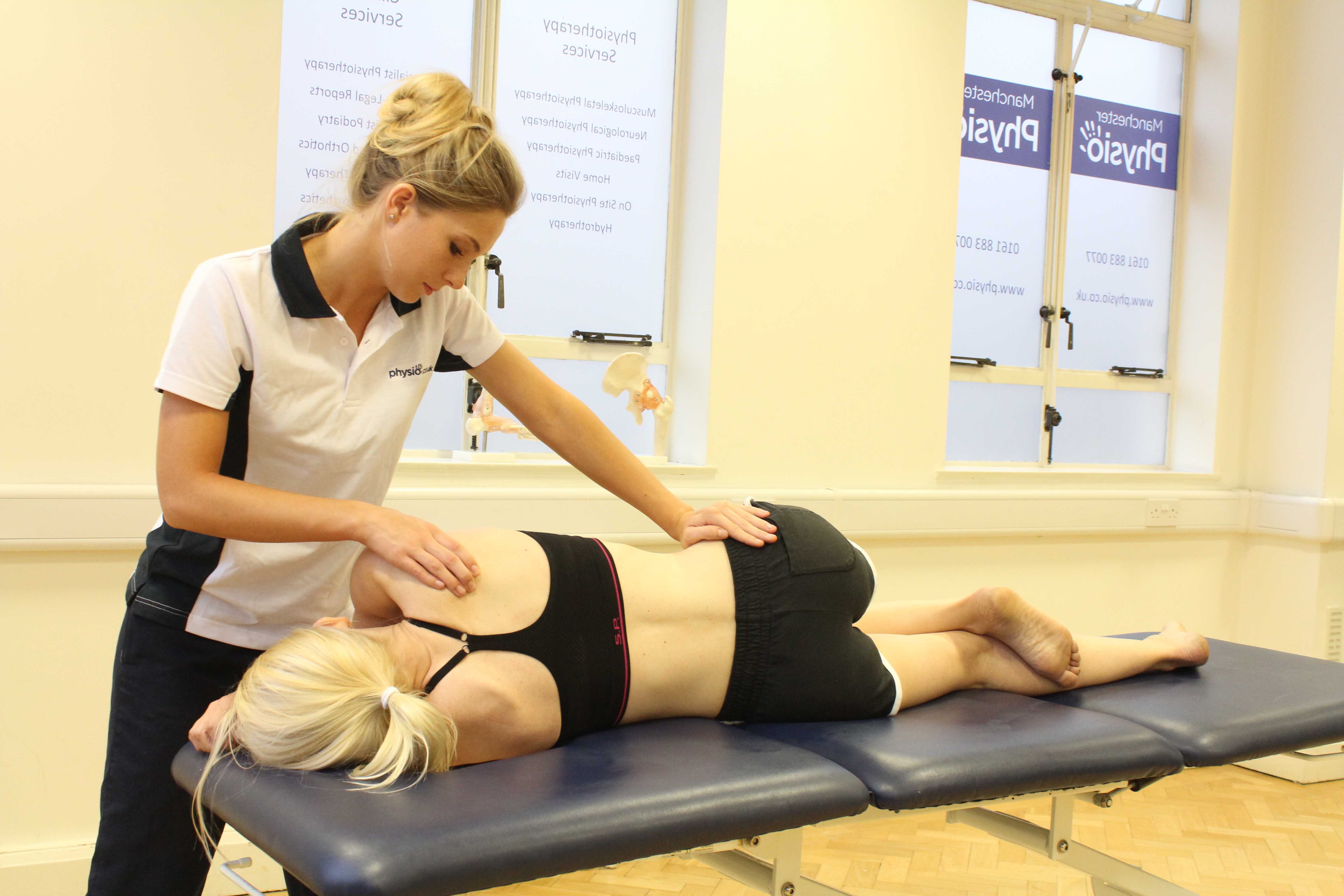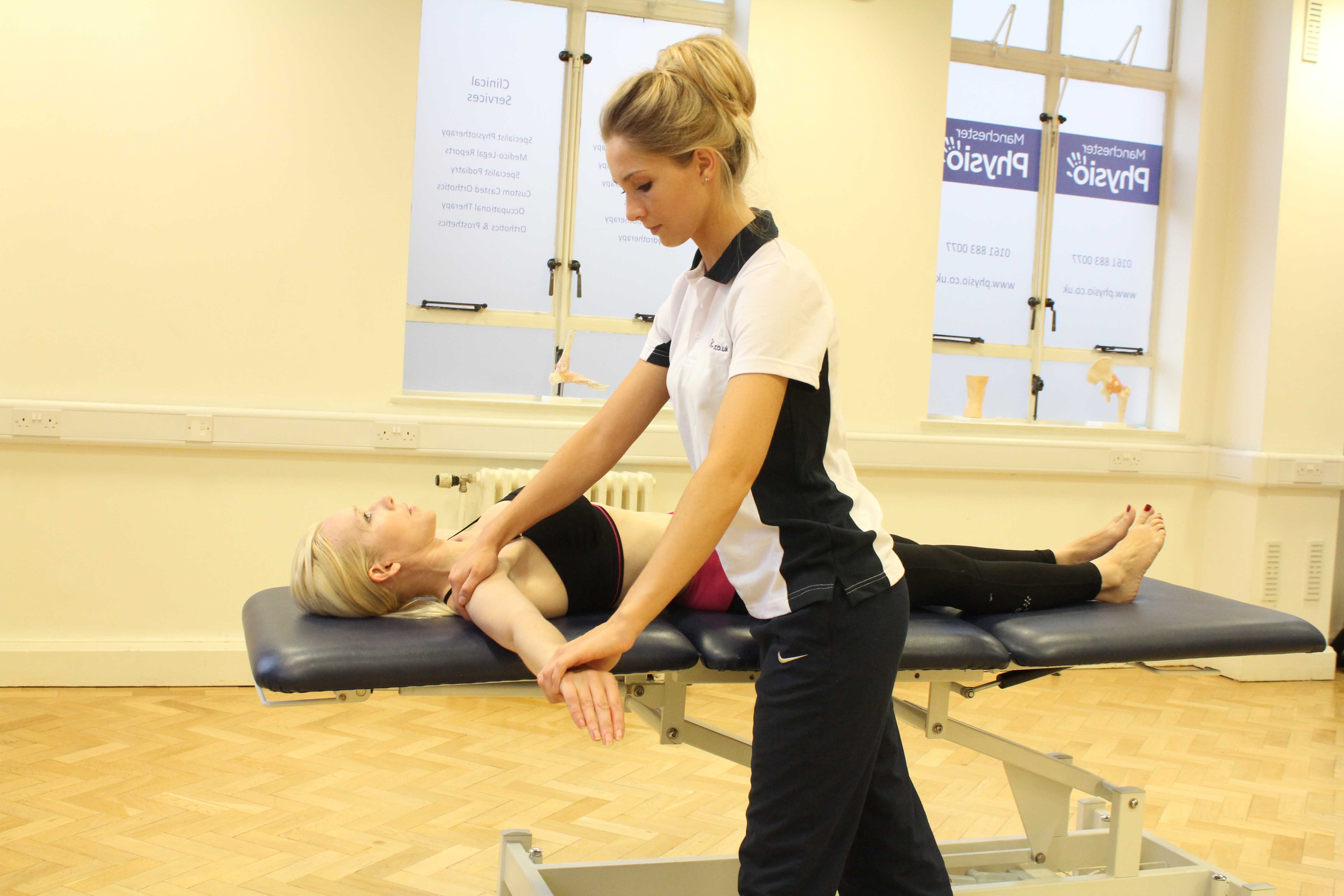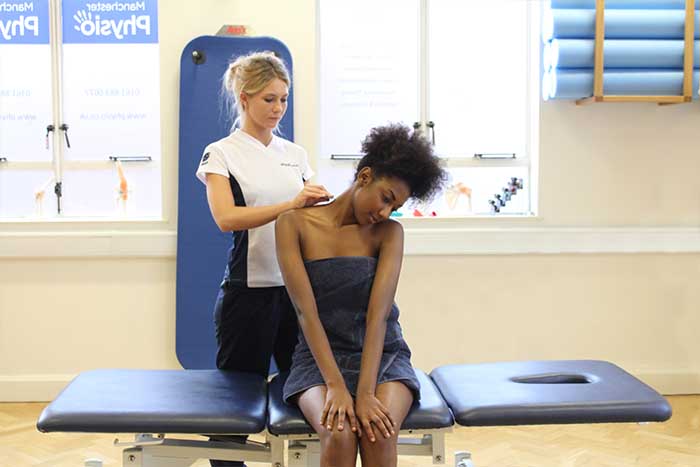Increased tissue elasticity is a common benefit gained through massage. Tissue elasticity is the ability of elastin fibres to allow muscles to stretch to their full range of movement. A variety of techniques are used to help increase tissue elasticity within a massage. Increased tissue elasticity can decrease tightness and tension and can increase range of movement. Our massage therapists at Physio.co.uk aim to increase tissue elasticity through massage to help decrease pain, improve relaxation and prepare a person for activity.
What is increased tissue elasticity?
Tissue elasticity is the ability to stretch a muscle to reach its full range of movement without restriction. Different types of tissues can be found within the body including soft tissues and connective tissues. Tissues often become restrictive and inelastic resulting in an increase in muscle tightness and pain. When tissue elasticity increases, muscle flexibility and range of movement is increased and muscle tightness, tension and pain is decreased. A massage encourages an increase in blood flow around the treatment area to help increase muscle temperature. An increase in muscle temperature helps to increase tissue elasticity. Elastin fibres are what allow tissues to increase in elasticity.

What are the benefits of increased tissue elasticity?
There are many different benefits of increased tissue elasticity. Benefits of increased tissue elasticity include:
 Above: Massage can help lengthen msucles by imporving it's elastic properties
Above: Massage can help lengthen msucles by imporving it's elastic properties Increasing tissue elasticity can increase range of movement. Inelasticity of tissues can result in an increase in restriction. Restriction can decrease range of movement. Decreased range of movement can also increase the risk of injury during activity. During a massage, temperature of muscles increases due to an improvement in blood flow. Increasing muscle temperature decreases tissue inelasticity and increases flexibility of the muscles. Increasing tissue elasticity and flexibility results in an increase in range of movement as restriction is reduced.
A common benefit of increased tissue elasticity is decreased pain. When tissue elasticity is decreased, the increase in restriction can result in pain. Restriction prevents muscles from reaching their full range of movement causing an increase in tightness and tension. Increasing tightness and tension further increases pain. An increase in blood flow occurs during a massage, increasing muscle temperature. An increase in muscle temperature helps to increase tissue elasticity and reduce restriction. Reducing restriction can decrease tightness and tension. Decreasing restriction, tightness and tension by increasing tissue elasticity all help to reduce pain.
Reduced tightness is a benefit gained through increased tissue elasticity. Decreased tissue elasticity can increase muscle tightness due to an increase in restriction. An increase in muscle tightness can also increase pain. A massage encourages an improvement in blood circulation which helps to increase muscle temperature. When muscle temperature rises, tissue elasticity increases. Increasing tissue elasticity allows muscles to relax and increase in range of movement. Relaxation of muscles results in decreased tightness and pain.
What techniques are used to increase tissue elasticity?
A variety of techniques can be used to increase tissue elasticity. Common techniques used to increase tissue elasticity include:
 Above: Impoving muscle length through massage can help reduce the liklihood of injury occuring
Above: Impoving muscle length through massage can help reduce the liklihood of injury occuringKneading is a technique used to increase tissue elasticity. Kneading involves slowly pulling and squeezing areas containing soft tissues. The pulling and squeezing actions used increase blood circulation. An increase in blood circulation causes an increase in muscle temperature, which helps improve tissue elasticity. Connective tissues can also be stretched and loosened when kneading is used. Connective tissues tend to become restrictive and increase pain and tightness within a person's body. Using kneading to increase tissue elasticity, decreases restrictiveness of connective tissues and therefore reduces tightness and pain.
Skin rolling can increase tissue elasticity. Skin rolling involves picking up and rolling skin between the fingers and thumbs. Skin rolling helps loosen fascia, a tough layer of connective tissue found beneath the skin, and reduce restriction caused by tissue inelasticity. Skin rolling is a technique that encourages an increase of blood flow to rise muscle temperature. A rise in muscle temperature increases tissue elasticity.
Tissue elasticity can be increased using wringing. Wringing is where soft tissues are pulled from either side of the treatment area to the centre in opposite directions using flattened hands and fingers. Wringing is another technique that increases blood flow and rises muscle temperature. Wringing can be used to help decrease tightness and help stretch and loosen muscles. The stretching and loosening of muscles is due to the increase in tissue elasticity that gives the muscles an increase in range of movement and decrease in restriction.

What situation would increased tissue elasticity help?
Increased tissue elasticity can help in many situations. Situations increased tissue elasticity can help include:
Acute pain can be helped when tissue elasticity is increased. Pain can be a result of many things. Most common reasons of increased pain include muscle tightness and tension. Muscle tightness and tension is often caused by inelasticity of muscle tissues which create restriction. During a massage, tissue elasticity is increased as muscle temperature rises. A rise in muscle temperature occurs as blood flow is increased. Increasing tissue elasticity helps to relieve restriction and decrease muscle tightness and tension. Decreasing muscle tightness and tension therefore results in a reduction in pain.
Increased tissue elasticity can help pre event. Before a person participates in an event muscles tend to be tight and restrictive, decreasing range of movement. Muscles are often this way due to the intensity of training. Decreasing range of movement can increase the chances of injury during short bursts of movements. Injuries more likely to occur include muscle pulls, tears and strains. Increasing tissue elasticity helps to relax muscles and decrease tightness and tension. Decreasing tightness and tension and improving tissue elasticity also helps to reduce restriction and increase range of movement. Increasing range of movement helps to prepare a person pre event and reduce the chances of injury.
Increased tissue elasticity can help improve relaxation. A person can become physically unrelaxed when muscles remain tense and restricted in movement. Tense muscles and restricted movement can both increase pain and further reduce relaxation. During a massage an increase in circulation occurs causing a rise in muscle temperature. An increase in muscle temperature helps to increase tissue elasticity. Increasing tissue elasticity reduces restriction and allows muscles to relax. Allowing muscles to relax decreases tension and increases range of movement. Decreasing tension and increasing range of movement can decrease pain. Decreasing restriction and decreasing pain improves relaxation.
Summary
Increased tissue elasticity is the capability of muscles to be able to stretch and reach their full range of movement. Increased tissue elasticity reduces restriction and increases muscle flexibility. A wide range of techniques are used to increases tissue elasticity including kneading, skin rolling and wringing. There are many benefits of increased tissue elasticity, the most common being increased range of movement, decreased pain and reduced tightness. Increased tissue elasticity can help in many situations including acute pain, pre event and relaxation. Massage therapists at Physio.co.uk increase tissue elasticity through massage to help decrease pain, increase range of movement and decrease tightness.
How can I arrange a sports massage to increase tissue elasticity?
The easiest way to arrange a sports massage to increase tissue elasticity at Physio.co.uk is to email us at office@physio.co.uk or call us on 0800 033 7800.
Alternatively if you have any questions please feel free to contact us.
We offer a 7 day service and provide home and clinic appointments.

 0330 088 7800
0330 088 7800



































